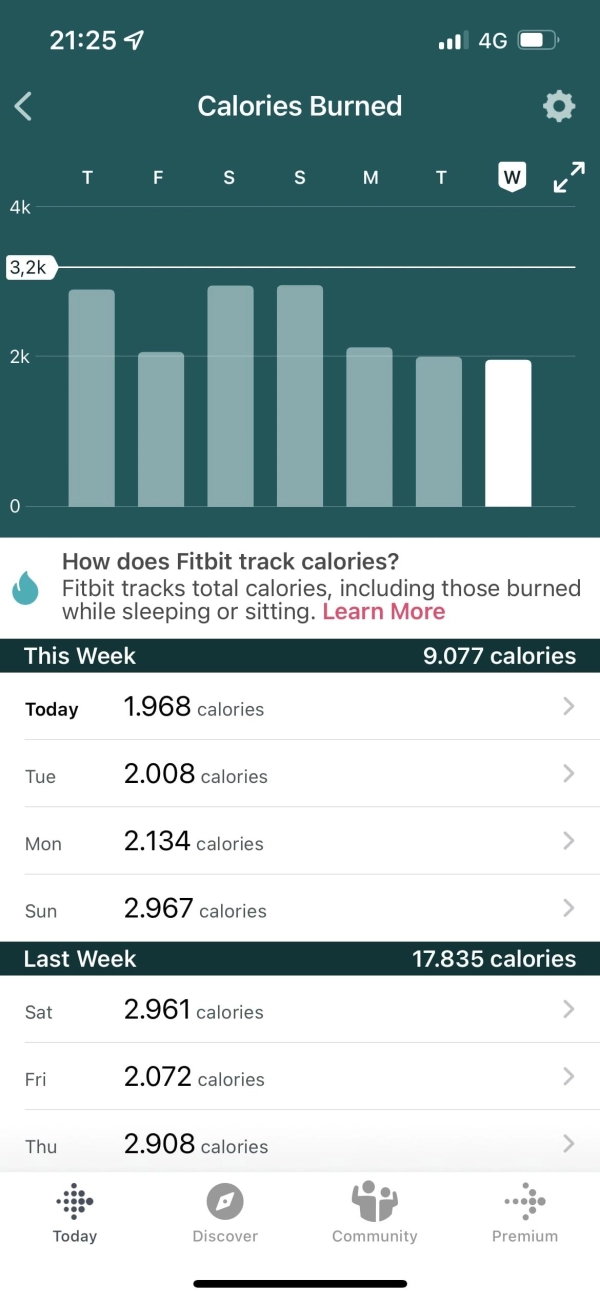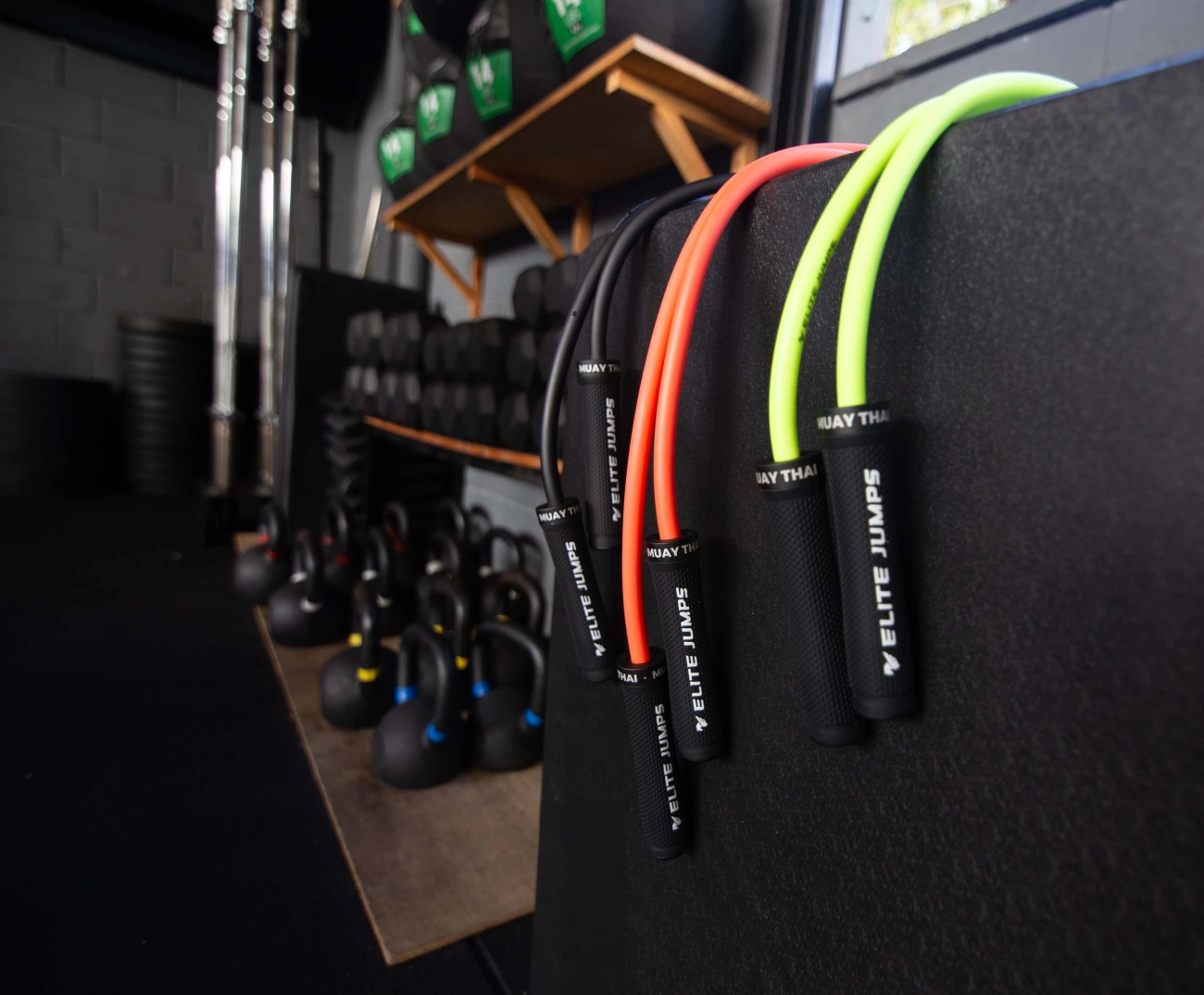Why Calorie Burn Matters in Fitness and Weight Loss
If you’re serious about fitness or weight loss, understanding calorie burn is a game-changer. Calories are simply units of energy our bodies use to function, and burning more calories than you consume is the foundation for losing weight. Whether your goal is shedding pounds, building endurance, or improving overall health, how many calories you burn during different exercises plays a key role.
The Role of Calorie Burn in Fitness Goals
When you exercise, your body uses calories to fuel your movements. The more calories you burn, the more energy you expend, which can lead to fat loss if paired with a balanced diet. For weight loss, it’s not just about working hard; it’s about working smart by choosing activities that burn more calories efficiently.
- Calorie burn affects fat loss and muscle definition
- Helps tailor workouts to meet specific goals like endurance or strength
- Influences how quickly you can achieve fitness milestones
How Understanding Calorie Expenditure Shapes Exercise Choices
Knowing how many calories different workouts burn can help you pick the right exercise for your lifestyle and goals. For example, if you want to maximize calorie burn in a short amount of time, high-intensity workouts like skipping rope could be a better fit than steady-state exercises.
- Choosing activities with higher calorie burn can accelerate fat loss
- Balances your effort and time investment for better results
- Guides workout variety to avoid plateaus and boredom
In short, focusing on calories burned playing jump rope compared to running or other cardio exercises lets you prioritize sessions that fit your fitness level, schedule, and preferences. This informed approach encourages consistency and helps you stay motivated on your fitness journey.
How Calorie Burn Is Measured in Skipping Rope and Running

Understanding how calorie burn is measured is key when comparing exercises like skipping rope and running, especially if burning fat faster is your goal.
Key Factors Affecting Calories Burned
Calorie burn depends on several things including:
- Intensity: The harder you push yourself, the more calories you burn. For example, high-intensity rope jumping will burn more calories per minute than slow, casual skipping.
- Duration: The longer you keep moving, the more calories you burn overall.
- Body Weight: Heavier people typically burn more calories doing the same exercise because their bodies use more energy.
- Metabolism: Everyone’s metabolism works a little differently, which changes how efficiently calories are used.
These factors combine to determine how many calories you burn during any workout, whether running or jump rope.
Standard Methods for Estimating Calories Burned
There are several common ways to estimate calorie burn:
- Metabolic Equivalents (METs): This is a simple method assigning values to different activities. Skipping rope can have a MET value between 8 and 12 depending on intensity, while running ranges from 7 to 11.
- Wearable Devices: Fitness trackers and smartwatches use heart rate and motion data to estimate calorie burn, offering personalized insights.
- Online Calculators: These take your weight, activity type, intensity, and time to give you an estimate of calories burned.
In fitness routines across the US, knowing these basics helps tailor workouts that fit goals, whether you’re leaning toward rope jumping workout benefits or the endurance challenge of running. Using reliable methods to track calorie burn makes choosing the best exercise for calorie burning clearer.
Calorie Burn Comparison Skipping Rope vs Running

When deciding between skipping rope and running for calorie burn, it helps to break down how many calories each exercise typically burns and what factors influence those numbers.
Average Calories Burned Running vs Skipping Rope
- Running generally burns about 100 calories per mile for an average person weighing around 155 pounds. This translates roughly to 10-12 calories per minute at a steady pace of 5 to 6 miles per hour. Heavier individuals burn more calories, while lighter people burn less.
- Skipping rope can burn up to 10-15 calories per minute, depending on intensity. For example, casual jumping burns fewer calories, but high-intensity jump rope workouts can outpace steady running sessions.
Impact of Workout Intensity on Calorie Burn
- Running intensity varies widely:
- Steady state running (consistent moderate pace) burns calories at a steady rate.
- Interval running — mixing sprints with walking or slow jogs — spikes calorie burn and boosts metabolism post-exercise.
- Skipping rope intensity is similarly flexible:
- Casual rope jumping is good cardio but burns fewer calories.
- High-intensity jump rope workouts, like double unders or fast-paced intervals, push calorie burn higher than steady running.
Influence of Body Weight and Skill Level
- Body weight plays a big role in calories burned. The more you weigh, the more calories you expend doing either activity.
- Skill level in rope jumping matters too. More skilled jumpers can maintain faster, longer rope workouts, increasing total calorie burn.
- Beginners might see lower burns initially but improve quickly with practice.
of Key Points
| Activity | Calories Burned Per Minute | Factors Affecting Burn |
|---|---|---|
| Running | 10-12 | Pace, body weight, terrain, intervals |
| Skipping Rope | 10-15 | Intensity, skill, speed, duration |
Both skipping rope and running are excellent calorie burners. Skipping rope has the edge for short, intense sessions, while running works well for longer, steady workouts. Your best choice depends on your fitness level, goals, and available time.
Additional Fitness and Health Benefits of Skipping Rope
Skipping rope is more than just a calorie burner; it offers a full body workout that engages multiple muscle groups at once. Unlike many cardio exercises that focus mainly on the lower body, jump rope workouts activate your legs, core, shoulders, and arms, helping build strength and endurance across your entire body.
Improved Coordination Balance and Cardiovascular Health
One standout benefit of skipping rope is the improvement in coordination and balance. The rhythm and timing needed to keep the rope moving smoothly challenge your brain and body to work together better. Over time, this enhances your agility, making everyday movements easier and reducing the risk of falls, especially for older adults.
Skipping rope is also a powerful cardio exercise that boosts heart health. Regular sessions increase your cardiovascular endurance, helping you sustain higher energy levels and lower the risk of heart-related issues.
Time Efficiency High Calories Burned in Short Sessions
If you’re tight on time, skipping rope is a top choice. You can burn a significant number of calories in just 10 to 15 minutes of high-intensity jumping. This makes it perfect for those looking to lose weight or improve fitness without spending hours at the gym.
Portability and Convenience
One huge plus of skipping rope is its portability. A jump rope is lightweight and easy to carry anywhere — no gym needed. Whether you’re traveling, at home, or outdoors, a skipping rope lets you squeeze in a quick, effective workout anytime.
Key benefits of skipping rope for fitness
- Engages multiple muscle groups for a full body workout
- Enhances coordination, balance, and agility
- Boosts cardiovascular health and endurance
- Burns calories quickly in short, intense sessions
- Portable and convenient for on-the-go workouts
For Americans looking to maximize calorie burn while improving overall fitness, skipping rope offers a unique combination of efficiency, muscle engagement, and heart health benefits that few other workouts can match.
Additional Fitness and Health Benefits of Running
Running is more than just a calorie-burning powerhouse. It offers several other fitness and health benefits that make it a go-to exercise for many.
Bone Density Improvement and Lower Body Strength
One of the standout benefits of running is its positive impact on bone density. The repetitive impact from running puts stress on your bones, which encourages them to grow stronger and denser. This helps reduce the risk of osteoporosis and fractures, especially as you age. Running also targets the lower body muscles, including your calves, hamstrings, and glutes, improving overall strength and endurance over time.
Mental Health Benefits and Stress Relief
Running is well-known for its powerful effect on mental well-being. It helps increase the release of endorphins, often called the “feel-good” hormones, which can reduce feelings of anxiety and depression. Many runners experience a “runner’s high,” a sense of euphoria and calm after a run. Plus, running regularly has been shown to improve focus, promote better sleep, and lower stress levels, making it a reliable way to support mental health.
Outdoor Advantages and Accessibility
Running’s accessibility is another big plus. You can run just about anywhere—parks, streets, trails—without needing special equipment or a gym membership. Outdoor running exposes you to fresh air and sunlight, which boosts vitamin D production and upward mood shifts. This connection with nature can make your workouts feel less like chores and more like enjoyable breaks from daily life.
In , running not only burns calories but also strengthens your bones, builds lower body muscles, nurtures your mental health, and offers unmatched outdoor freedom and convenience. These benefits make running a strong contender when looking for the best exercise for calorie burning combined with overall health gains.
Comparing Impact and Injury Risks Skipping Rope vs Running
When choosing between skipping rope and running for calorie burn and fitness, understanding the impact on your joints and injury risks is key. Both exercises offer great benefits, but they affect your body differently.
Joint Impact of Running vs Rope Skipping
- Running is a high-impact exercise, especially on knees, ankles, and hips. Each step sends shockwaves through your joints, which can add up over time, potentially leading to overuse injuries.
- Skipping rope is generally lower impact compared to running, though it still involves repetitive jumping. Because the jumps are usually shorter and lighter, the stress on joints can be less if done with proper technique and cushioning (like a shock-absorbing mat or good shoes).
Common Injuries and Safety Tips
Running risks:
- Shinsplints
- Runner’s knee (patellofemoral pain syndrome)
- Achilles tendonitis
- Plantar fasciitis
Skipping rope risks:
- Ankle sprains (from uneven surfaces or poor form)
- Shin splints (if intensity is too high or surfaces are hard)
- Tendon strain in calves or Achilles (without proper warm-up)
Safety tips for both exercises:
- Always warm up before starting your workout.
- Use good quality, supportive shoes appropriate for your activity.
- Start gradually, especially if you’re new to either exercise.
- Choose softer or more forgiving surfaces when possible.
- Maintain proper form—avoid slouching or overextending on jumps or steps.
- Listen to your body to prevent overtraining.
Suitability for Different Fitness Levels and Age Groups
- Skipping rope can be adjusted easily for beginners by using slower rope rotations or alternating feet, making it a flexible option across age groups.
- Running tends to be more demanding on joints, so people with joint issues or older adults may find skipping rope or low-impact cardio exercises better.
- Both exercises can be modified—consider interval training for runners and varied skipping styles (like side-to-side or double unders) to keep workouts engaging and appropriate for your fitness level.
In , if joint impact or injury risk is a concern, skipping rope offers a highly effective, lower-impact alternative to running with high calorie burn potential. Proper technique and equipment, like quality JumpRopeWholesale ropes, reduce injury risks and keep your workouts safe and efficient.
How to Incorporate Skipping Rope and Running Into Your Fitness Routine for Maximum Calorie Burn
Combining skipping rope and running is an effective way to boost your calorie burn, improve cardiovascular fitness, and build strength. Both exercises complement each other well—running typically targets lower-body endurance, while skipping rope offers a full-body workout and sharpens coordination.
Combining Running and Skipping Rope for Best Results
- Alternate workouts: Use skipping rope for quick, high-intensity intervals and running for longer steady-state cardio sessions.
- Try a HIIT style workout: For example, 1-2 minutes of rope jumping at high intensity followed by 5 minutes of steady running or jogging.
- Use skipping rope as a warm-up or cooldown to enhance muscle activation and improve balance before and after your run.
- Aim for 3-5 workout days per week, mixing the two to keep your routine fresh and prevent overuse injuries.
Sample Workout Plan
| Day | Activity | Duration | Intensity |
|---|---|---|---|
| Monday | Running steady state | 30 minutes | Moderate pace |
| Wednesday | Skipping rope intervals | 20 minutes | 30 sec high intensity/30 sec rest |
| Friday | Combined workout | 10 min skipping + 20 min run | Skip – high intensity, run moderate |
| Sunday | Light jog or walk + skipping | 15 min jog + 10 min skip | Low to moderate |
This mix maximizes calories burned playing jump rope and running while improving cardiovascular and muscular endurance.
Choosing the Right Skipping Rope for Your Routine
Using the right skipping rope really makes a difference in your workout efficiency and comfort. I recommend checking out JumpRopeWholesale’s variety of options, like ball bearing skipping ropes for smooth rotation or PVC jump ropes for durability and speed. They even offer customizable options, so you can find the perfect rope length and style for your fitness level. Explore their collection here: customize skipping rope.
Tips for Progression
- Start slow: If new to jump rope, begin with short sessions (5-10 minutes) and build up.
- Increase intensity: Add speed or double-unders as your coordination improves.
- Track your workouts: Use ropes with digital counters or set goals to stay motivated.
- Mix running paces: Combine easy runs with intervals to boost overall calorie burn.
By combining running and skipping rope smartly, you’ll optimize fat burning, build endurance, and avoid workout plateaus. Remember to listen to your body and adjust intensity to suit your current fitness level.
Why Choose JumpRopeWholesale for Your Skipping Rope Needs
When it comes to choosing the right skipping rope, quality and variety make all the difference in your workout results. JumpRopeWholesale is a trusted skipping rope manufacturer and supplier dedicated to giving you top-notch ropes that fit your fitness goals perfectly.
High Quality and Wide Selection
JumpRopeWholesale offers a broad range of PVC jump ropes, beaded jump ropes, and custom OEM/ODM options. Whether you’re a beginner just starting your jump rope workout for weight loss or a pro aiming for high-intensity sessions, you’ll find ropes designed for durability, speed, and comfort. Durable materials and smooth rotation handles help you keep a consistent pace, so you burn calories efficiently and avoid interruptions during your workout.
Trusted by Customers Across the US
Customer feedback shows that users appreciate JumpRopeWholesale ropes for their reliability and performance. Many highlight how having the right equipment boosted their motivation and helped them stick to their rope jumping workout benefits. The brand’s reputation in the US market is built on trust – a must when you want a product that lasts and performs well.
How the Right Equipment Boosts Calorie Burn and Workout Experience
Using a well-made skipping rope directly impacts your calorie expenditure:
- Smooth ropes reduce tripping and breaks in your rhythm, so you keep burning calories consistently.
- Properly weighted ropes increase intensity, helping you burn fat faster without needing longer sessions.
- Comfortable grips reduce hand fatigue and improve your form, which means longer, better workouts.
Choosing JumpRopeWholesale means you’re investing in equipment that helps maximize your calorie burn and overall fitness gains. For those comparing running vs skipping rope calories, the right rope turns your sessions into effective, high-calorie-burning workouts right in your home or on the go.
JumpRopeWholesale brings together quality, variety, and expert design—all tailored to boost your skipping rope sessions and support your fitness journey. If you’re serious about burning calories and improving cardio fitness, their equipment is made to help you get there faster and safer.



